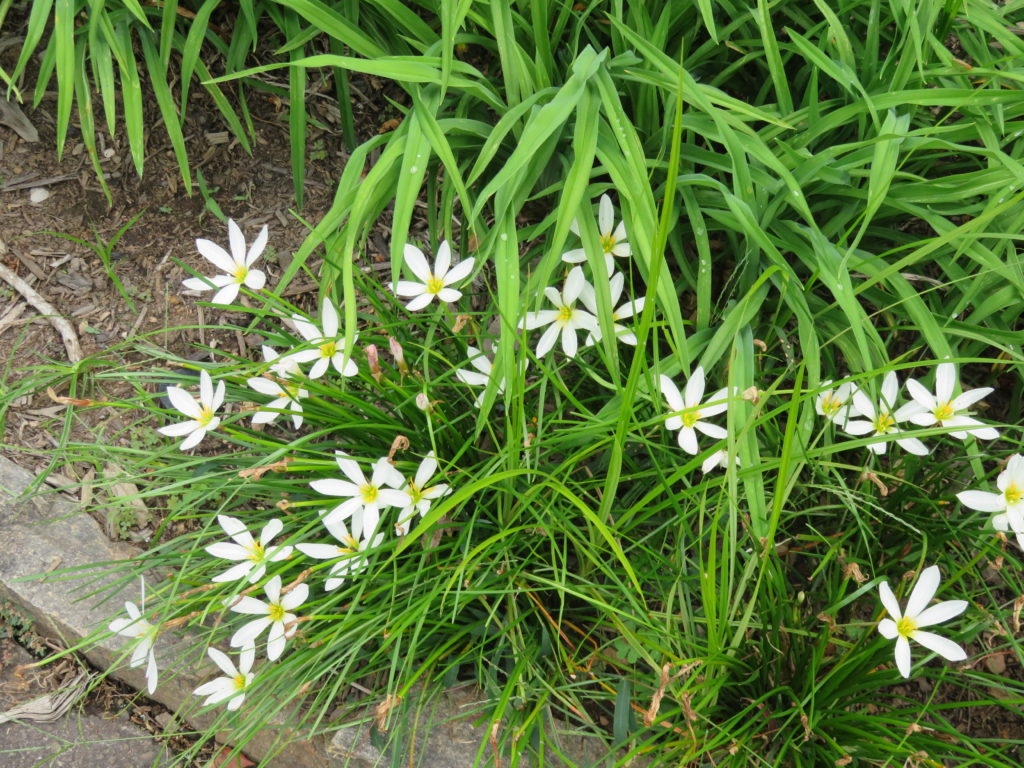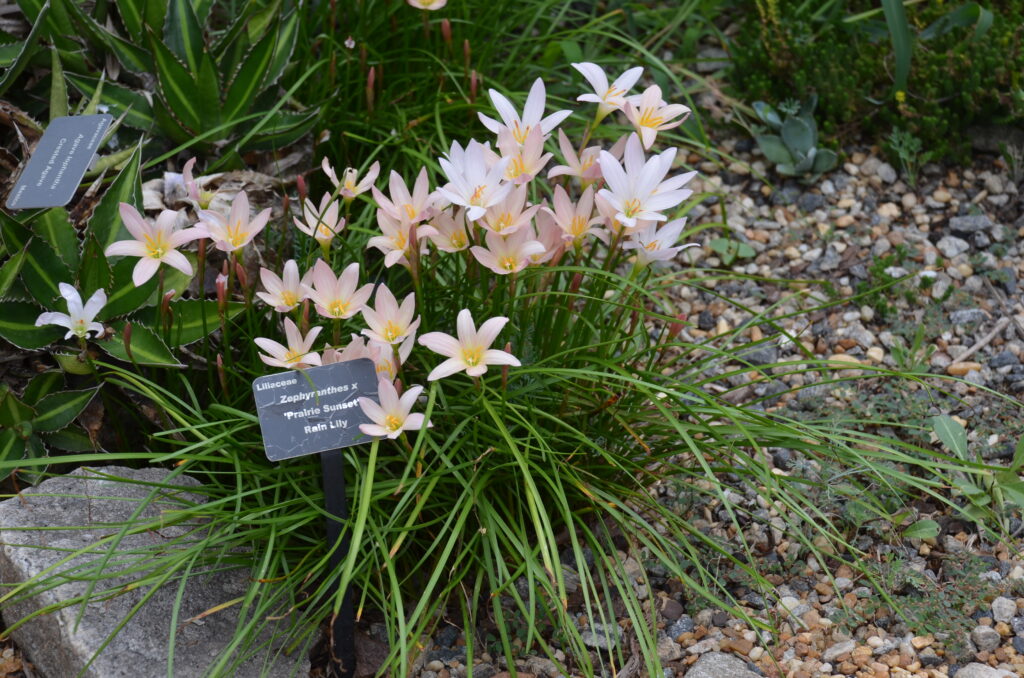Rain Lilies (Zephyranthes), aka Zephyr lily, fairy lily, Atamasco lily, et al. are small perennial bulbs that are native to the southeastern United States, Central and South America (USDA hardiness zones 7-10). In the U.S., these bulbous members of the Amaryllis Family (Amaryllidaceae) grow in low woods and wet meadows.

Rain lilies bloom from spring to autumn (depending on species planted). Wet to rainy summer weather is what they like. Dormant bulbs can survive hot dry spells. Soak the bulbs prior to planting for faster germination. Following the last frost of spring, sow bulbs in ground beds, rock gardens, rain gardens, or in containers @ 8-10 bulbs per sq. ft. Choose from yellow, white or pink flower colors.
Plants have grass like foliage. Depending on species, rain lilies range from 2 to 12 inches (5 – 30 cm.) in height. Sow bulbs at a depth of 3 inches (8 cm) and spacing of 4-6 inches (10 -15 cm) apart in partially shaded or sunny areas of the garden that have well-drained, moist, humus-rich, mildly acidic soil. Rain lilies benefit from fertilizing at planting time and annually.

Plant in full sun to partial shade in moist to wet organically rich soils. Occasionally add some leaf mold to the soil. It will tolerate seasonal flooding and will bloom best if it receives at least 2 hours of direct sunlight a day. This bulb is frost sensitive so only thrives in areas that do not have deep winter freezes. Northern gardeners grow rain lilies in containers as annuals and move pots into a non-freezing (cool) dry spot for winter storage.
Over the years rain lilies spread from bulb offsets to form colonies. Caution: mark the bed area as the dormant bulbs are unseen many weeks of the growing season.
Butterflies and honeybees cover blooms starting in late summer. Bulbs multiply rapidly and are both pest resistant and critter proof.
Rain lilies (bulbs) are sold by mail order suppliers and are hard to find (or sold out) at local garden shops. I recommend Brent and Becky’s Bulbs in Gloucester, VA as a mail order source.

 Posted in
Posted in 
